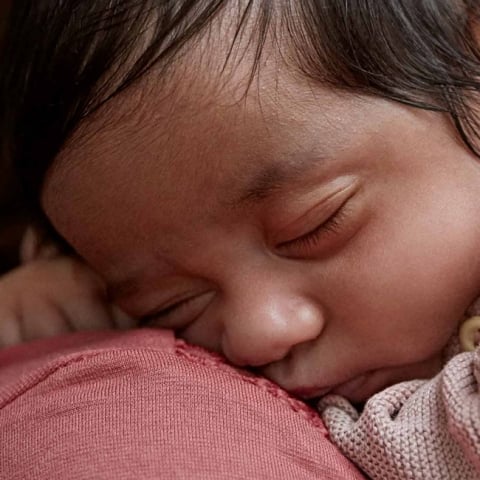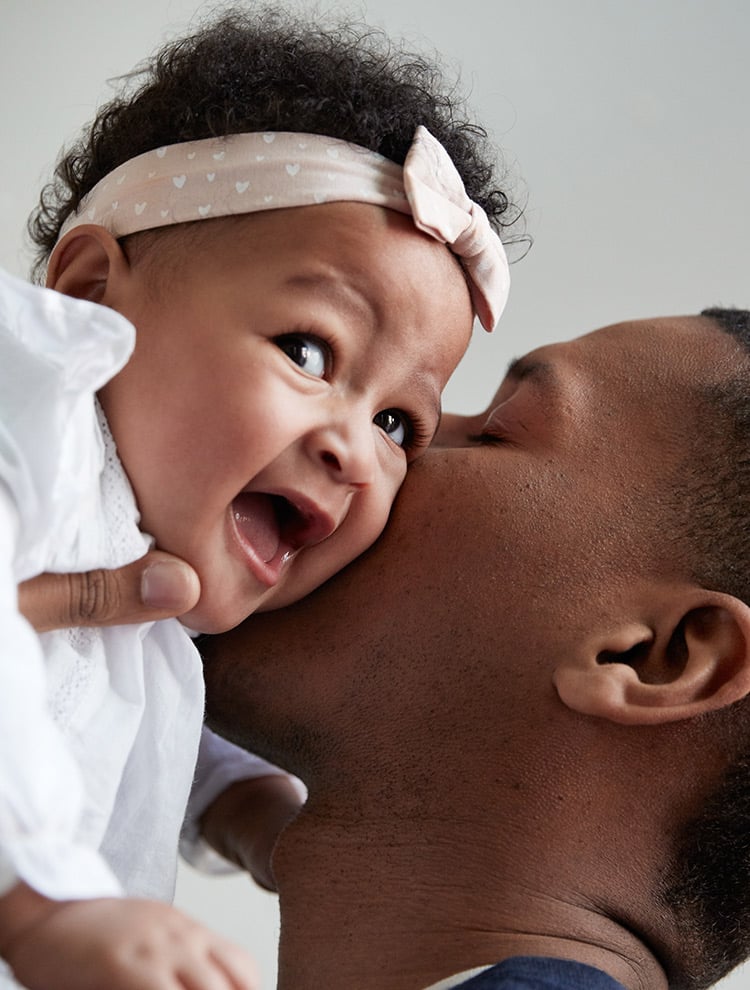Making Sense Out of Scents
Why is it so vital to pay attention to olfactory environments?
Hi, I’m Dr. Pamela Dalton from the Monell Chemical Senses Center in Philadelphia and today I’m going to talk to you about the olfactory system and how to make sense out of scents. Here are my disclosures.
I’d like to talk to you about the importance of the sense of smell in both infant wellness and in healthy, physiological and emotional development. First, let’s talk a little bit about the olfactory system, because it’s a little bit of a mystery to many people. The olfactory system starts in the nose, where receptors respond to odorant molecules that are sniffed into our nose. Those molecules then trigger a reaction that goes into the olfactory bulb, which is sitting right here behind the bridge of our nose, and that then sends a signal to the brain. Now, odorant molecules have to be able to be airborne in order to be smelled and sniffed into our nose. So that limits the size of them.
They’re usually pretty volatile. When the odor molecules reach our receptors, they trigger a pattern that allows us to recognize what it is we’re smelling. But in many ways, smell is different than any other sensory system, because smell, the part of the brain that responds to smell, is linked directly to our emotional and memories part of the brain − the hippocampus and the amygdala. So when we smell something, instead of it first being processed through the thalamus, which is what happens with vision and hearing and every other sensory system, we have an immediate reaction to smell, because it goes directly to the part of the brain responsible for emotions and memory. This is probably why memories are more emotional when cued by smell than other sensory systems.
This research was conducted by a colleague of mine. And what she did was she presented individual cues in different ways, either the sound of something, the sight of something, the label for something, or the smell of something. And then she asked people to remember them. And what she found was that there wasn’t a big difference in how well people remembered the items based on smell, but when they described them, they used many more emotional terms and they reported being far more emotional. And so there – we believe – is a unique relationship between smell, memory and emotion, due to the physiological wiring in our brain.
Now, this learning about odors starts extremely early, even in utero and continues through infancy, childhood, and adulthood. It turns out that the olfactory system is actually functional by the end of the second trimester. So although the olfactory receptors are in an aqueous environment, they are still being bathed by the odors that the mother wears or that she consumes. And so this is giving the fetus, essentially, a picture of the olfactory world, prior to birth. And what does this do? Well, it turns out that if mother is using a particular scent or probably consuming a particular food regularly, during this last trimester, you can see the effect on the infant after birth. This is how much time children spent looking at a toy that was either scented with vanilla, wasn’t scented or was scented with alcohol.
And in this case, there were two groups of mothers that had given birth to these infants. One group rarely used vanilla scent and the other group used it almost exclusively throughout the last trimester. And what you can see is that for the infants whose mothers regularly used vanilla scent − they spent much more time looking at the toy that was vanilla scented − showing that they had a memory that was actually developed in utero. It turns out that smell contributes, along with other senses, to mother-infant bonding in very important ways and probably in ways that are underappreciated. Infants are much more familiar with the odor of their mother than with odor of unfamiliar women.
In fact, they are learning this also in utero. As you can see from the graph, the blue bars represent how much time infants spent orienting towards a pad that was scented with their mother’s underarm odor. This is contrasted with the dark bar, where these were unfamiliar women, who were not lactating, or unfamiliar women who were lactating. So in both cases, these infants recognized their mother’s scent and oriented toward that scent, which is probably an evolutionary type of survival.
It’s also the case that maternal odors, and odors that are associated with mothers, have equally soothing effects on infants. In this case, infants were getting a routine heel stick, which of course will make them cry. And what they did was after the heel stick, they presented the infant with either their mother’s odor, scented on a pad; a familiar vanilla scent, that the infants had come to know, because their mothers used vanilla; or for the infants that didn’t have a mother that used vanilla, it would be an unfamiliar scent. And what you can see here is that in the red bars, the time spent crying after the heel stick was significantly less if the infant was given either their mother’s odor or an odor that was associated with mother. In contrast, the infants who were given an unfamiliar scent cried much longer, in most cases, almost twice as long.
So clearly, there is some benefit in terms of either the mother’s scent, or even a scent associated with mother, in being able to soothe an infant. This occurs very early. Two-day-old infants will orient towards their mother’s odor relative to the odor of another unfamiliar woman. You can see here that the time spent looking in the direction of the mother’s pad was twice as long as it was for their orientation out of novelty, just looking at a woman – looking at the pad of a woman who was unfamiliar. And certainly, there is a vast importance of recognizing your own mother’s axillary odor, not only for orienting when feeding, but simply the important act of bonding with someone that is probably their primary caregiver.
It’s also the case that odors can combine with other senses to even improve their potency.
This is a study that was done where infants were either given odor and touch concurrently; a nice stroking massage; stroking followed by an odor; odor alone; or just the massage alone and then 48 hours after birth they were exposed to this odor again. And what you can see here from the blue bars, that the change in the head turn – in other words, the orienting response to an odor that had been paired with a touch, a pleasant touch, showed that these infants were learning that association shortly after birth. So this is clearly a sensory system that has developed in utero, but continues to share some of those features of the olfactory system after birth.
In short, our sense of smell is really fundamental to our development and our functioning. Olfactory learning starts very early, before birth and clearly helps us develop social capacities. Infants attach meaning to familiar smells within the first hours after birth and they show the effect of having smelled familiar smells – either their mother, or an odor associated with mother − right after birth. It’s clearly important in understanding mother-infant bonding. Mother’s scent, whether it’s her own body odor, or a fragrance that she’s regularly worn, has a soothing effect on infant and can prepare them for sleeping, feeding, and reduce crying. It is also one of the most effective ways to change our mood. If you smell something that you have a pleasant association to, and that can start at a very early age, you actually will have a dramatic mood shift. And we know that for people who lose their sense of smell because of neurodegenerative diseases, often their affect becomes very flat as a consequence. So it’s very important, not only in infancy, but it carries throughout the life-span.
So I hope I’ve given you some information that tells you just how important our sense of smell is, why we should pay attention to the olfactory world that we expose our children to, and what it means for us, as we go through healthy development and functioning.
Thank you very much.
What's New?
The world of science is always evolving. That’s why JOHNSON'S® is devoted to providing the latest and greatest in research, innovation, and technology.





By registering, you agree to receive additional transactional, marketing/promotional and sample material from the Johnson's Baby Professional website. Your personal information will be used to fulfill your request for samples and/or patient education materials. Your information will be shared only with JNTL Consumer Health (Philippines) Inc., its affiliates, and any third parties working on their behalf to fulfill your request, and will be governed by our site's Privacy Policy.